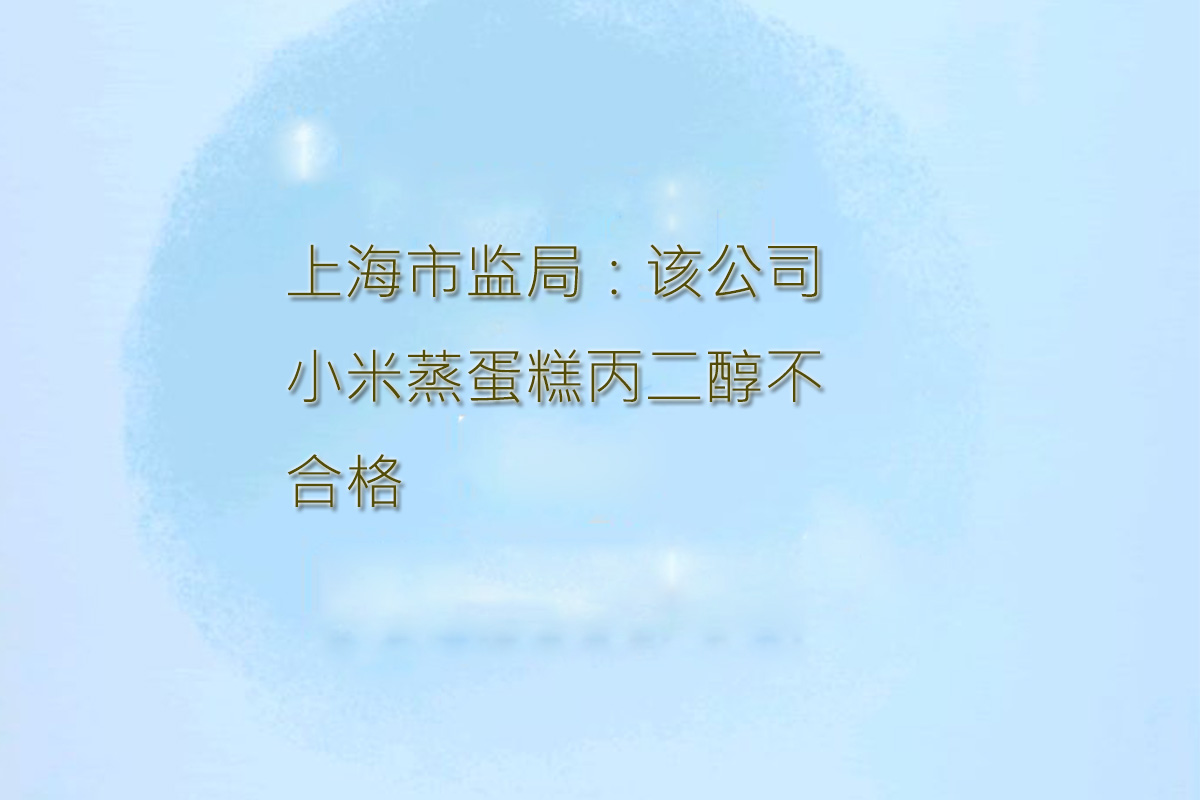
July 17, 2017, Shanghai Market Supervision and Administration The Bureau released the 28th provincial food safety supervision and inspection information in 2019. A total of 694 batches of samples were sampled, of which 691 were qualified and 3 were unqualified.
The propylene glycol of steamed millet cake produced by Shanghai Coconut Food Co., Ltd. was declared unqualified. The test result was 3.86g/kg, and the standard value is ≤3.0g/kg.
Propylene glycol is a legal food additive. Propylene glycol does have an impact on the nervous system and is irritating, but the important thing is that both are extremely low. GB2760-2014 “National Food Safety Standards for the Use of Food Additives” stipulates that the maximum usage amount of propylene glycol in pastries is 3.0g/kg. It is relatively safe for ingestion or skin contact as long as the prescribed limits are not exceeded, especially since neurological effects only occur at extremely high doses.
The nominal number of pure cakes [pastry] produced by Shanghai Qihong Food Co., Ltd. is unqualified, and the test results are 94000; 7000; 21000; 25000; 18000 (CFU/g). The standard values are n=5, c=2, m=10000, M=100000 (CFU/g).
The nominal number of tiger skin pure cakes [pastry] produced by Shanghai Qihong Food Co., Ltd. is unqualified. The test results are 18000; 25000; 23000; 21000; 8200 (CFU/g), and the standard value is n =5,c=2,m=10000,M=100000(CFU/g).
The total number of bacterial colonies is an indicator microbial indicator, which is mainly used to evaluate the cleanliness of food and reflect whether the food meets the hygienic requirements during the production process. If the total number of bacterial colonies in food seriously exceeds the standard, it will destroy the nutritional content of the food, accelerate the spoilage of the food, and make the food lose its edible value. The reason why the total number of bacterial colonies exceeds the standard may be that the raw materials and auxiliary materials used by individual companies have a high initial bacterial count, and the hygienic conditions of the production and processing process are not strictly controlled as required, or the packaging containers are not cleaned and disinfected in place, and may be sealed with the product packaging. It is related to laxity, improper control of storage and transportation conditions, etc.
For the unqualified products found in the above-mentioned random inspections, the Municipal Supervision Bureau has required the relevant district market supervision and administration bureaus to promptly investigate and deal with the unqualified food and its producers and operators, investigate and deal with it in accordance with the law, and further urge the enterprises to fulfill statutory requirements obligations, and record relevant information in the food safety credit files of food producers and operators. The investigation and handling status shall be disclosed by the district market supervision and administration bureau responsible for case investigation and handling where the enterprise is located in accordance with regulations.
Consumers are particularly reminded that if they purchase or find substandard food listed in the attachment on the market, please call the food safety complaint reporting hotline 12315 to make a complaint.
About propylene glycol in cakes:
Propylene glycol is an organic compound (diol), usually It is a slightly sweet, odorless, colorless and transparent oily liquid that absorbs moisture and is easily mixed with water, acetone, and chloroform. It is widely used in the food, pharmaceutical and cosmetic industries.
In the application of food-grade propylene glycol, in flavors, fragrances, and baked pastries, propylene glycol is an extremely excellent raw material and has an irreplaceable position in the production of many products.
According to the supply of propylene glycol: In the food industry, propylene glycol reacts with fatty acids to form propylene glycol fatty acid esters, which are mainly used as food emulsifiers; propylene glycol is an excellent solvent for condiments and pigments. It can be used as a solvent to dissolve food additives that are insoluble in water, such as preservatives, pigments, and antioxidants, and then add them to food. It has strong hygroscopicity and has moisturizing and anti-freezing effects on food.
According to the relevant provisions in the “GB2760-2014 National Food Safety Standard Food Additive Use Standard”, the functions of propylene glycol are stabilizers and coagulants, anti-caking agents, defoaming agents, emulsifiers, and moisture retaining agents. , thickening agent, the maximum usage amount required in raw and wet noodle products (such as noodles, dumpling wrappers, wonton wrappers, siu mai wrappers) is 1.5g/kg, and the maximum usage requirement in pastry production is 3.0g/kg.



 微信扫一扫打赏
微信扫一扫打赏
